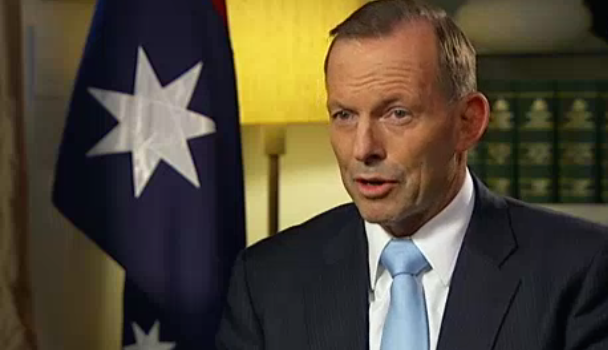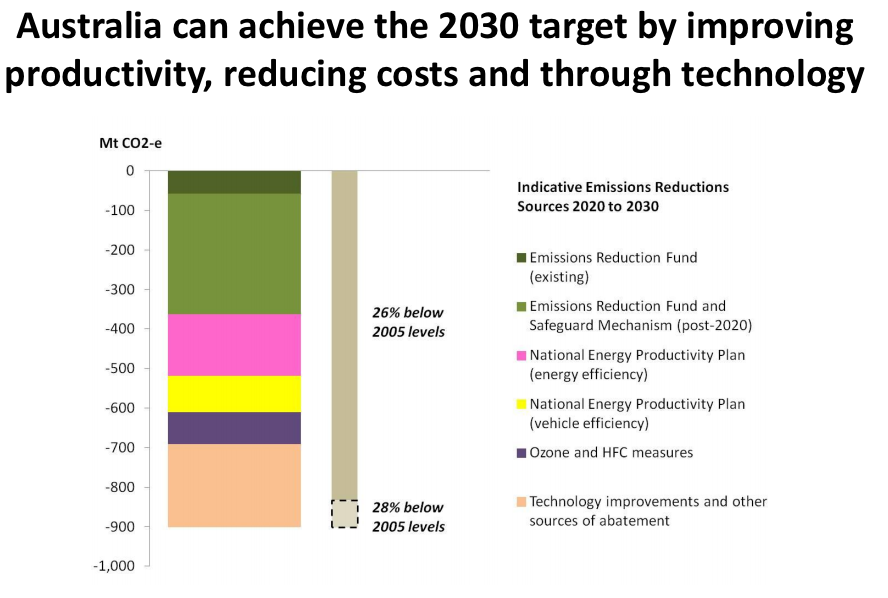The news that the Abbott government has settled on an emissions reduction target for Australia out to 2030 heralds a new turn in climate politics in this country.
The target, announced by Prime Minister Tony Abbott today, is a 26 per cent reduction on 2030 levels compared to 2005. It would put Australia at the back of the international pack – offering less than Canada, the United States or Europe. Only Japan is offering a smaller target.
On the one hand, of course, this target is manifestly inadequate. A modest decrease in carbon pollution is not nearly enough to arrest the terrifying momentum of climate change. As glaciers and ice-caps melt and bushfires intensify, the world is running out of time to stop global warming before it runs away with a liveable climate.
Rapid and deep cuts to emissions are the only practical and ethical policy. The non-political Climate Change Authority recommended a 40-60 per cent cut by 2030, based on the available science.
On the other hand, it’s amazing the Abbott government committed to an emissions target at all. This is the government that has loudly proclaimed its undying love of fossilised carbon, a government hell-bent on burning as many dead dinosaurs as it can dig from the soil. This is also the government that contains many avowed climate sceptics, and which campaigned so successfully against the Labor Party on climate at the last election.
The 26 per cent figure appears to have been massaged with a view to party unity. The government was today openly briefing press gallery journalists that climate sceptics in the party were consulted about it, and “could live” with the target. That in itself tells you quite a lot about the way this government conducts climate policy.
Long discussion on climate policy in party room. Govt briefing says "climate sceptics" in the ranks said they could live with the policy
— David Speers (@David_Speers) August 11, 2015
Say what you like about the snail’s pace of international action on climate, there is no doubt that Australia has been dragged to this position by international pressure.
Australia under the Coalition has stayed inside the Kyoto protocol, and that means we need to commit to a new emissions reductions target in the run up to this year’s climate talks in Paris.
In the media conference today, Prime Minister Abbott was at great pains to point out that Australia’s emissions reduction target was “smack bang in the middle” of rich world emissions targets. You’d have to say that, without this international pressure, Australia under the Coalition would not be formally committed to reducing emissions at all.
The government claims Australia will make the largest per capita reductions of the rich industrialised countries. That’s a fudge to begin with: it highlights just how pollution-prone our economy currently is. Countries in Europe and even in Asia start well ahead of us when it comes to their relative emissions intensity. Australia has so far to travel because we are already so dirty.
Never mind the target – can the government actually deliver? No.
The government plans to meet the 2030 target essentially on a wing and a prayer. There were graphs galore at today’s media conference, but the crucial one from Greg Hunt committed the government to extending Direct Action all the way out to 2030.
As we’ve remarked time and again here at New Matilda, Direct Action is a joke, and an expensive one at that. There is no credible analysis that shows that the current policy can cut emissions enough. It simply can’t achieve even the current 5 per cent 2020 target on its current budget, let alone an expanded 2030 target.
Just last week, for instance, new figures showed that the government’s vaunted “safeguards” for Direct Action will be so lax that the country’s 20 worst polluters won’t even have to cut back. Indeed, they’ll be able to increase their pollution levels. The government’s own figures from the first auction of Direct Action reductions show that the policy can’t meet its budget.
But Direct Action is just one of the government’s various fudges for meeting the fictitious 2030 target.
The second biggest category of emissions reduction in Greg Hunt’s PowerPoint today came from a catch-all section entitled “technology improvements and other sources of abatement”, which Hunt explained away as referring to better batteries. When Sky News’ David Speers asked him to unpack the figure, Hunt could provide only his characteristic waffle, interspersed with attacks against Labor.
That’s the sort of obfuscation we’ve come to expect from the Abbott government when it comes to climate. This is a government viscerally opposed to meaningful action on climate change on any level beyond the symbolic.

To see why, judge the government not by its words, but by its actions.
In less than two years, it has removed the price on carbon, abolished the carbon pollution cap, lowered the Renewable Energy Target, abolished the Climate Commission, slashed funding for renewable energy research, and attempted to abolish the Clean Energy Finance Corporation and the Australian Renewable Energy Agency. All of these actions make Australia’s emissions target harder to reach.
As a result, the government does not have a credible carbon reduction policy. The most economically efficient method, a carbon price, has already been ruled out. If it wanted to, the government could also buy cheap (admittedly dubious) international carbon credits, which would make its task very much cheaper. It ruled international credits out again today, too.
As Nick Feik pointed out today, “it’s fairly obvious that the government’s main strategy is simply to present a fictional target, to make no serious attempt to curb emissions, and to fight a rear-guard action attacking any action on climate change on the grounds that it would cost too much.”
The announcement of a 2030 target today reveals many ironies, not least for a prime minister hanging on to his job by his fingernails. It shows that the politics of carbon, always volatile, have again taken a turn. The new environment will be far less amenable to the Coalition, and offers considerable opportunities for Labor and the Greens.
Voters look to be re-engaging with climate as an issue, just as they did in the last years of the Howard government, when it became a significant negative for the Coalition. Weather always plays a part: the last years of the Howard government were drought years.
The problem for the Abbott government is that climate change, and therefore carbon policy, is not going away. A severe El Nino looks set to develop this summer, potentially heralding a return to bushfire and drought.
If the government had a credible policy for dealing with climate change, it could face down the Greens and Labor on the issue, and perhaps even wedge them. But it doesn’t: the government has spent years fighting the very concept of climate change tooth and nail, smashing whole industries whenever it got the chance.
As a result, as the tide turns, the government will be caught short. Climate, like marriage equality, represents another issue where the government is out of touch.
Donate To New Matilda
New Matilda is a small, independent media outlet. We survive through reader contributions, and never losing a lawsuit. If you got something from this article, giving something back helps us to continue speaking truth to power. Every little bit counts.





